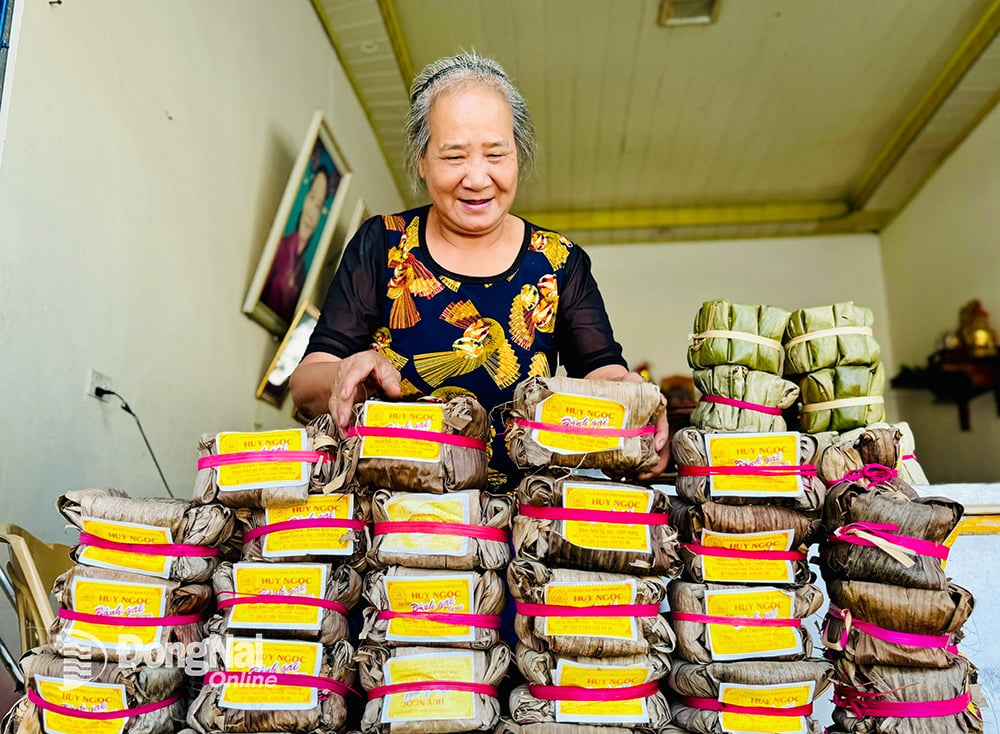 |
| Ms. Hoang Thi Loan, who has spent her whole life making gai cake in Thinh My village, Tho Dien commune, Tho Xuan district, Thanh Hoa province. Photo: B.Nguyen |
Tu Tru sticky rice cake village is located on the right bank of the gentle Chu River, about 9km from Tho Xuan town and 1.5km from Lam Kinh historical relic site. The name Tu Tru sticky rice cake originated in the 1940s, when Mia villagers brought the cake to sell on Tu Tru street. Since then, buyers have been calling it Tu Tru sticky rice cake.
Traditional craft villages in the ancient capital Lam Kinh
Lam Kinh is the hometown of national hero Le Loi, the starting point of the Lam Son uprising and the beginning of the victory against the Ming invasion. Lam Kinh is the ancient capital, built by King Le Thai To in 1428, as a capital to worship ancestors and at the same time as Thai Mieu - the resting place of the Le dynasty kings.
According to the long-standing establishments making gai cakes in this craft village, the making of Tu Tru gai cakes originated in the Later Le Dynasty, in the 15th century. At that time, the cakes were made during every village festival, and were used as offerings to King Le and during important national anniversaries, Tet, and festivals. Therefore, Tu Tru gai cakes are also known as royal cakes.
Mr. Ngo Thanh Cong, the owner of a long-standing banh gai cake making facility in Thinh My village, said that in the past, it was difficult to get rich from this cake making business, mainly because every day you make cakes, you will have money to cover your family's living expenses and your children's education. This is the main job of many women in the village because this work is done at home, taking advantage of the time to look after their children and grandchildren. They are not only the main workers in every stage from preparation to making cakes, but when the batch of cakes is completed, the women and mothers are also the ones who transport the cakes to sell or supply them to other retailers.
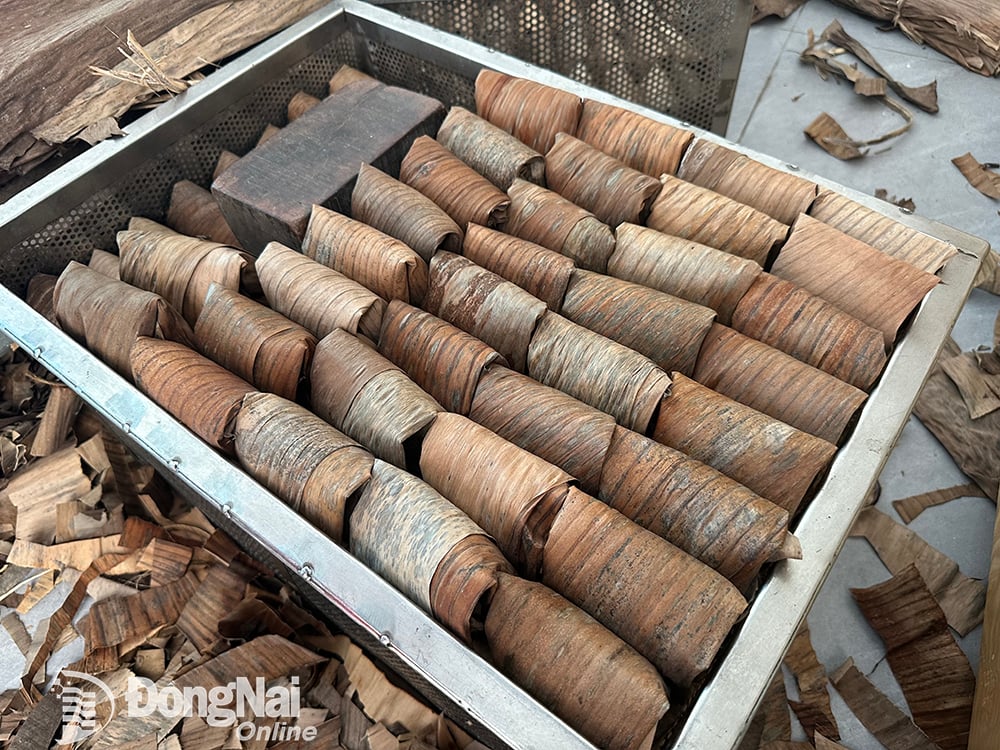 |
| Many establishments making gai cake are concentrated in Thinh My village, Tho Dien commune, Tho Xuan district, Thanh Hoa province. |
Today, Lam Kinh relic site is a famous spiritual and historical tourist destination of Thanh Hoa province, attracting many domestic and foreign tourists. Along with the strong development of tourism, the new rice cake making profession has developed into a craft village with dozens of establishments operating regularly. In 2015, the rice cake craft village of Thinh My - Tu Tru - Tho Dien commune was recognized by the People's Committee of Thanh Hoa province as a "Traditional rice cake craft village". In 2020, this rice cake craft village was recognized as a provincial-level tourist destination, and the rice cake dish has become a famous tourist specialty far and wide.
An interesting feature when visiting the Lam Kinh rice cake making village is that many production facilities often have a large yard in front of the house - where all stages of making cakes take place. In front of the porch, the owner often sets up shelves displaying cakes to welcome customers. Local buyers often stop by the cake making area to chat with the owner. Customers can also stop by to see the ingredients and the cake making process, and ask about the traditions of the long-standing craft village. This atmosphere contributes to creating the unique features of the Lam Kinh royal cake making village.
According to gourmets, diners must also know how to fully enjoy the flavor of a delicious sticky rice cake. Most notably, when peeling the cake, to the innermost layer of leaves, diners should peel it off in small pieces like peeling sticky rice cakes. Tu Tru Tho Xuan sticky rice cake is best eaten after steaming for about 10 hours.
Preserving traditional craft
According to the establishments making gai cakes in My Thinh village, to make a complete gai cake, it takes many steps, so it is necessary to mobilize all family members, including children who can also help their grandparents and parents. Those making gai cakes need to prepare many types of ingredients including: gai leaves, sticky rice, molasses, green beans, sugar, coconut pulp, sesame, dried banana leaves, thinly split strips dyed red to make strings. In which, many preparation steps are very elaborate.
A special ingredient that is indispensable, creating the unique characteristics of Tu Tru sticky rice cake is the ramie leaves. After harvesting, the leaves are pre-processed and dried until one side is black and the other side is grayish-white. When making the cake, the dried ramie leaves are put in a pot and boiled thoroughly, then washed, squeezed dry, ground finely and cooked with molasses.
Sticky rice for making cakes must be of good quality, many kilns choose yellow sticky rice. The sticky rice is soaked, cleaned and ground into flour, then mixed with ramie leaves cooked with molasses, pounded until smooth, creating a shiny black dough. Making the filling is also very elaborate, must choose good green beans, soak and clean the shells, cook carefully so that the beans are not too mushy or too dry, add enough sugar, add banana oil, vanilla for fragrance, then pound it until smooth, mix with grated coconut. After preparing the ingredients of the cake, the baker sits down to take the dough, spread it out evenly, then add the filling, roll it into a ball so that the outer layer completely covers the filling, sprinkle sesame evenly, wrap it tightly into a square shape. Finally, the cake is steamed, left to cool before completing all the steps.
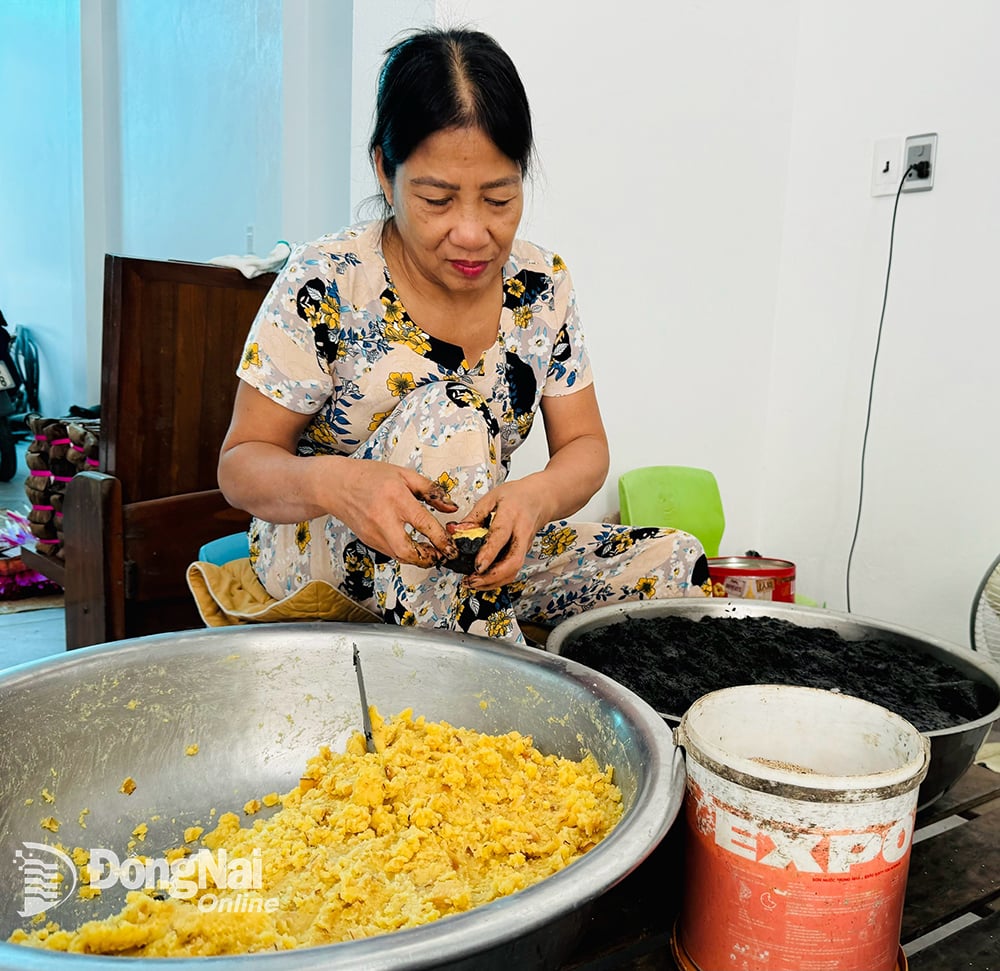 |
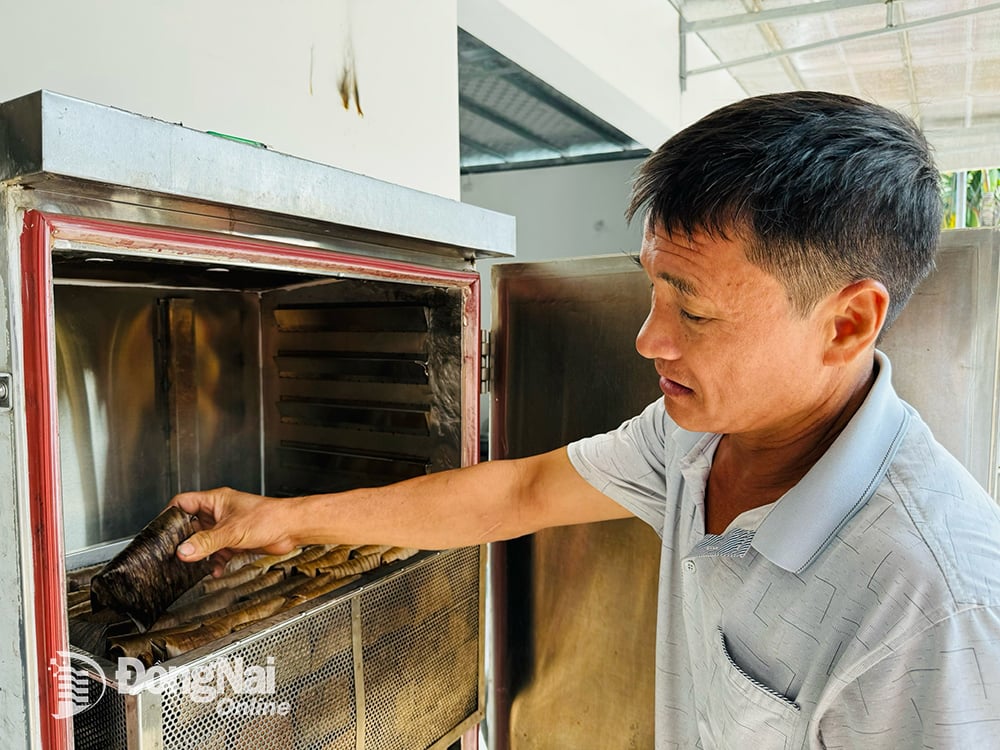 |
| Making gai cake at Cong Cuc gai cake making facility in Thinh My village, Tho Dien commune, Tho Xuan district, Thanh Hoa province. |
In the past, everything was done by hand, so it took a lot of time, and the number of cakes each household made was not much. Every step of processing was meticulously done by hand, so a facility could only make a few dozen cakes, and on holidays and Tet, when there were many workers, the most they could make was a few hundred cakes/day. Nowadays, thanks to investing in machinery, during peak season, the facility makes thousands of cakes/day; even on days when there are many orders, the facility works overtime to make up to several thousand cakes/day. Not only supplying to many provinces and cities across the country, his bakery also receives many orders for cakes to be sent to the US, Australia... as gifts.
Ms. Hoang Thi Loan (in Thinh My commune, 71 years old) has been making gai cake all her life. Nowadays, with the development of tourism, this rustic cake has become a famous specialty in many places. Therefore, her family's children and grandchildren have opened more branches and invested in more machinery to be able to meet large orders.
When the establishments making gai cake flourished, some establishments were chasing after profit and no longer paid as much attention to quality as before. However, the establishments that have been attached to this craft village for a long time are conscious of respecting and protecting the brand of the craft village.
Ms. Loan added that nowadays, many of the manual steps in making cakes are replaced by machines. But whether it is done entirely by hand or many steps are replaced by machines, the secret to making a delicious cake is still choosing the best ingredients to make a cake that will still be delicious all week long.
Ms. Nguyen Thi Hai, a resident of Tho Dien commune, said that she often orders gai cakes to send to her children and relatives who are working in Da Nang and Ho Chi Minh City to sell because this hometown specialty is increasingly known to many diners. Ms. Hai often chooses to order from a long-standing local gai cake making facility to have the best quality and most delicious cakes. In addition, cakes that are made well and of good quality can be preserved for a longer time without affecting their flavor.
Binh Nguyen - Ngoc Lien
Source: https://baodongnai.com.vn/dong-nai-cuoi-tuan/202503/nuc-tieng-banh-gai-tien-vua-tu-tru-o-lang-nghe-co-b966467/





![[Photo] Overcoming all difficulties, speeding up construction progress of Hoa Binh Hydropower Plant Expansion Project](https://vstatic.vietnam.vn/vietnam/resource/IMAGE/2025/4/12/bff04b551e98484c84d74c8faa3526e0)

![[Photo] Closing of the 11th Conference of the 13th Central Committee of the Communist Party of Vietnam](https://vstatic.vietnam.vn/vietnam/resource/IMAGE/2025/4/12/114b57fe6e9b4814a5ddfacf6dfe5b7f)

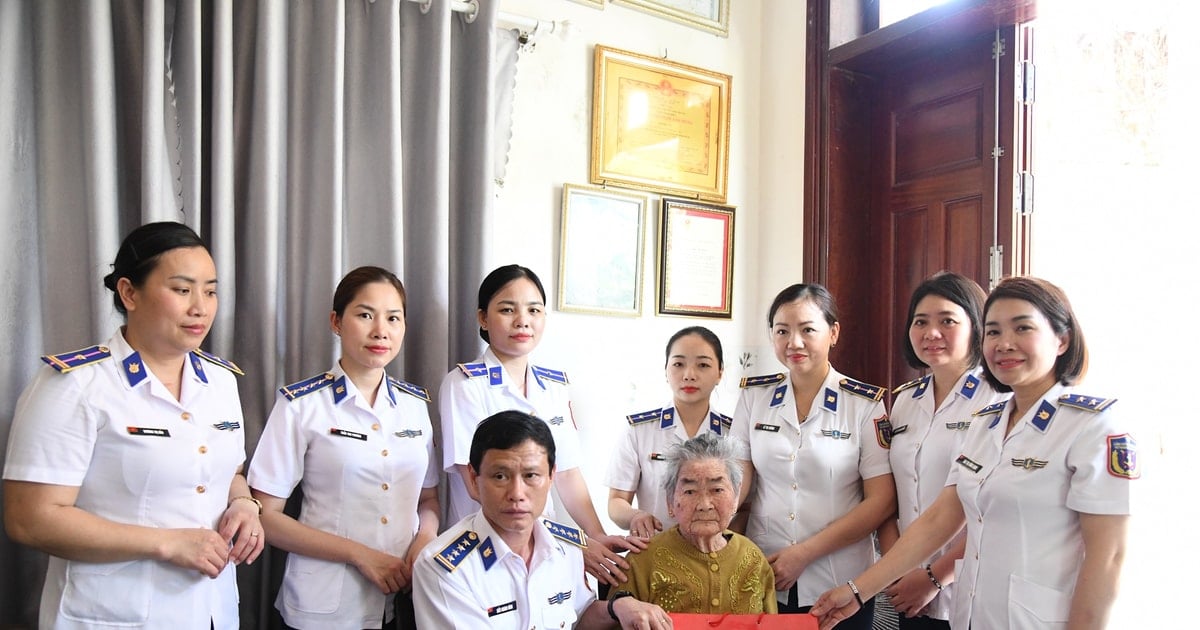
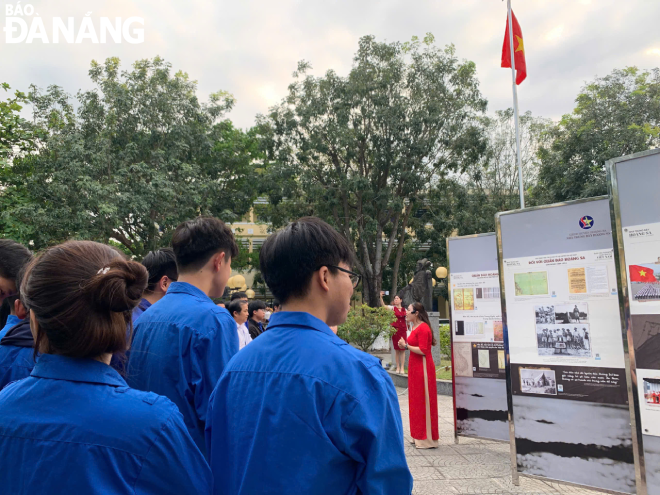











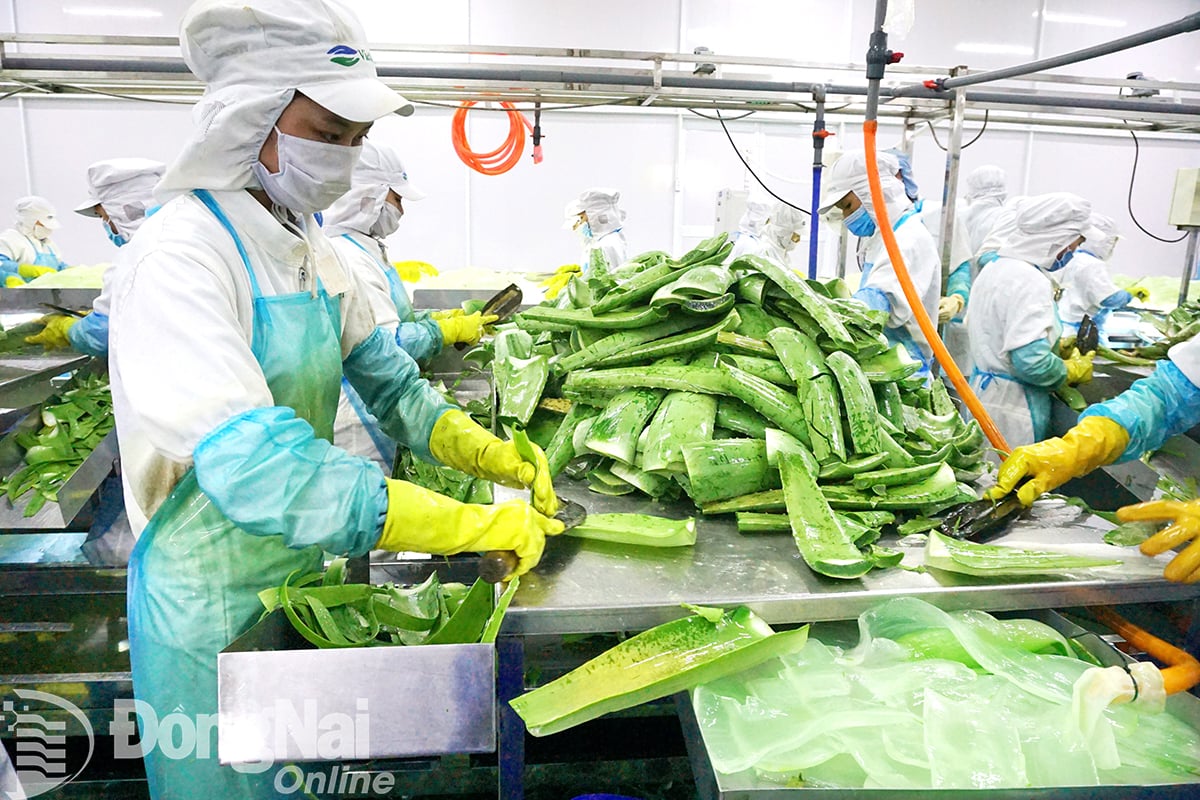

































































Comment (0)